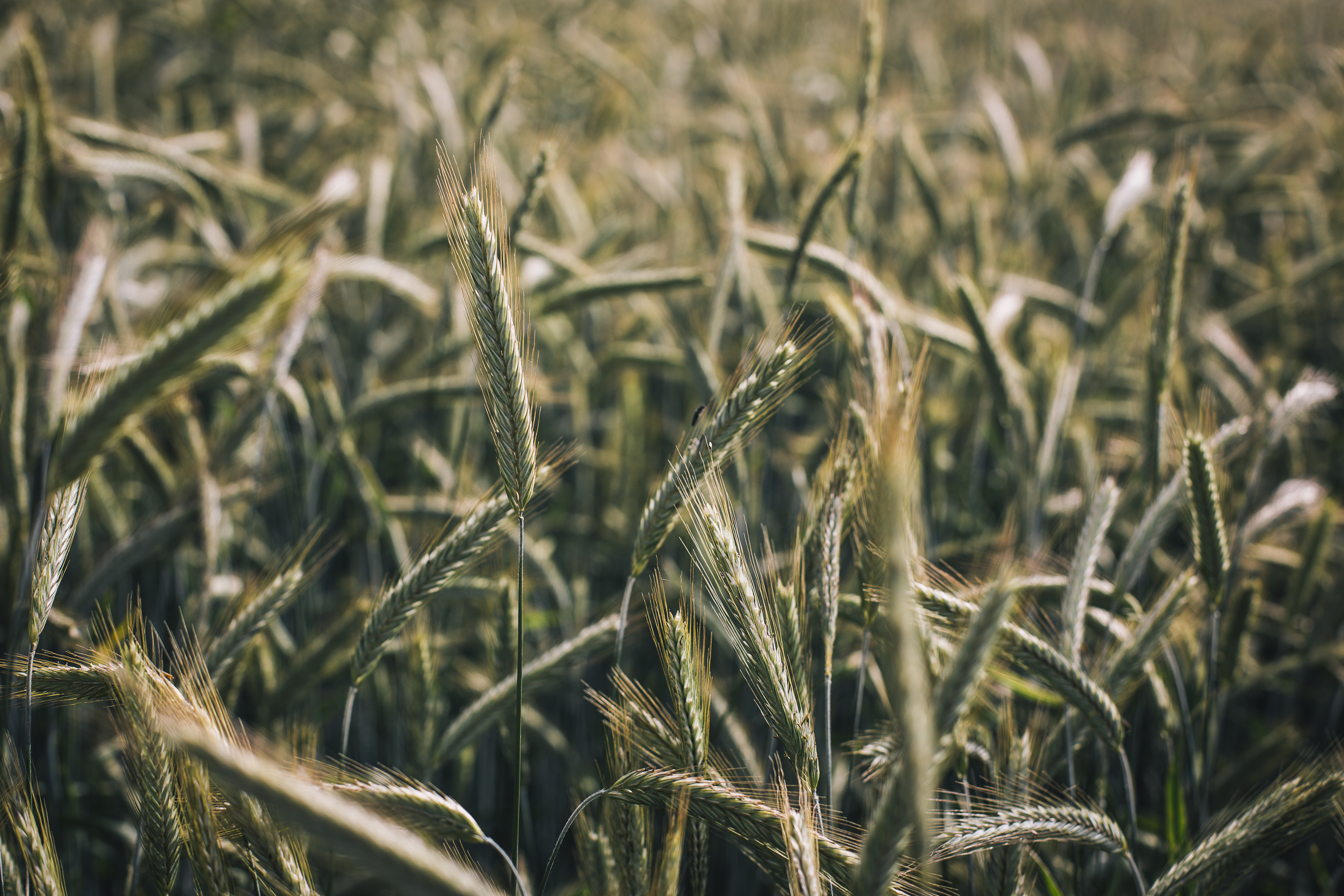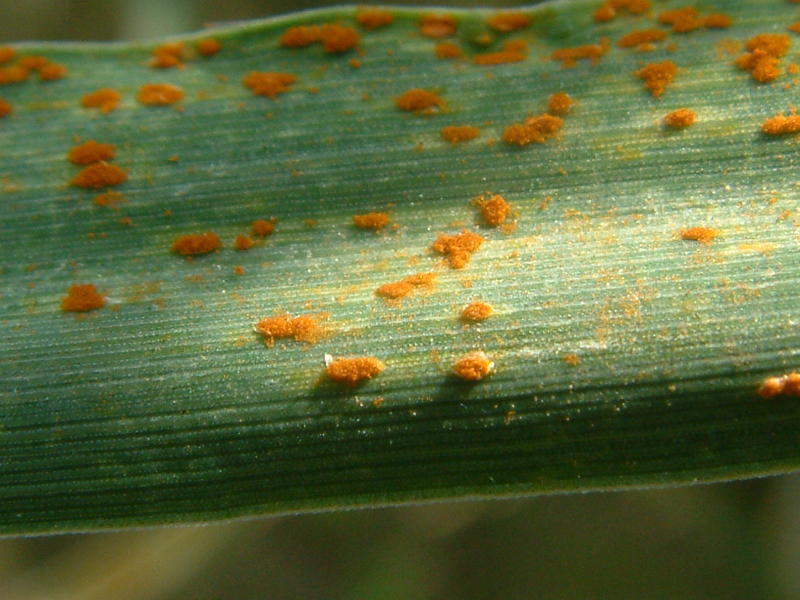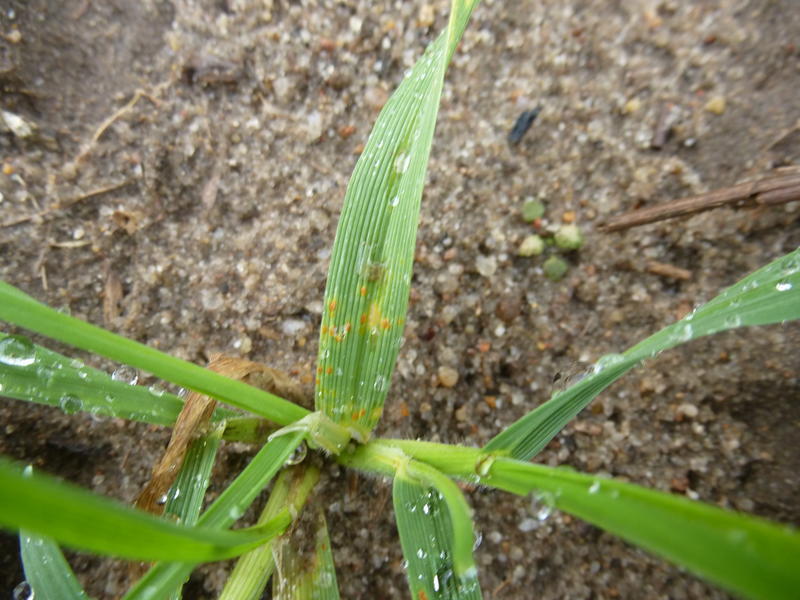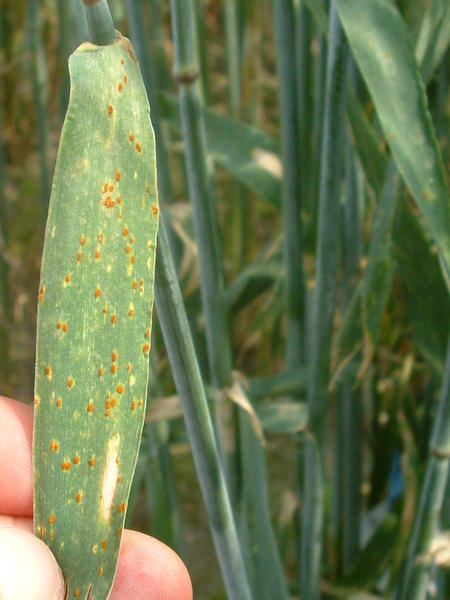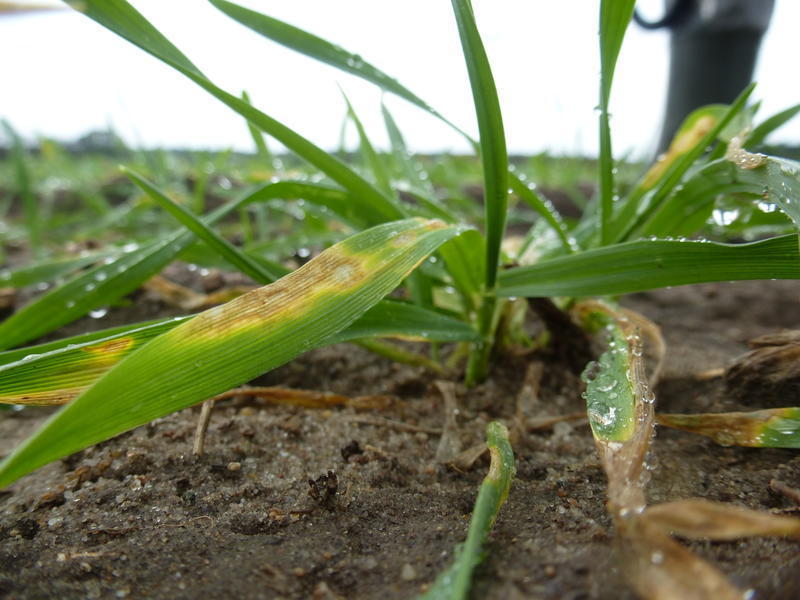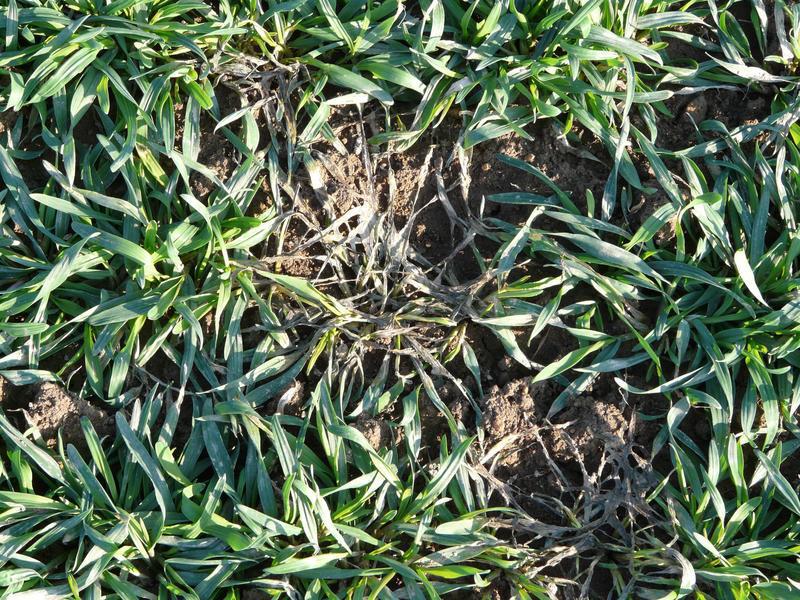Brown rust in rye
(Puccinia recondita f. sp. recondita)
Meaning
The most important disease in rye cultivation is brown rust. Even when occurring in late developmental stages, it can lead to large yield losses. In addition to the grain yield (number of grains per ear and thousand-grain weight), infection with brown rust also impairs the grain quality, for example by reducing the protein content. Autumn infections reduce the wintering resistance and increase the susceptibility to secondary infections.
Main symptoms
The rust-brown, oval pustules with powdery contents (uredospore stores) occur on the upper side of the leaf, and to some extent also on the leaf sheaths, stalks and husks. Brown rust pustules are often surrounded by a light-coloured halo. Shortly before maturity, darker-coloured winter spore deposits (teleutospore deposits) are formed, which are scattered and covered by the epidermis of the leaf. Brown rust requires a living host plant year-around for nutrition and multiplication. The pathogen overwinters as mycelium or uredospores on volunteer or winter cereal. For the infection to spread, brown rust requires an abundance of heat and moisture. Sunny days at 20 - 26°C and warm nights (15°C) with dew formation or precipitation towards evening are ideal for development. The generation time from the beginning of infection to the formation of the uredospore store in susceptible species is 140 degree-days, i.e., at a mean temperature of 15°C, a new generation of spores appears after only nine days.
